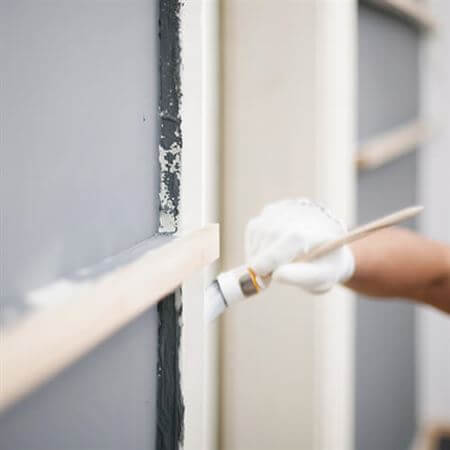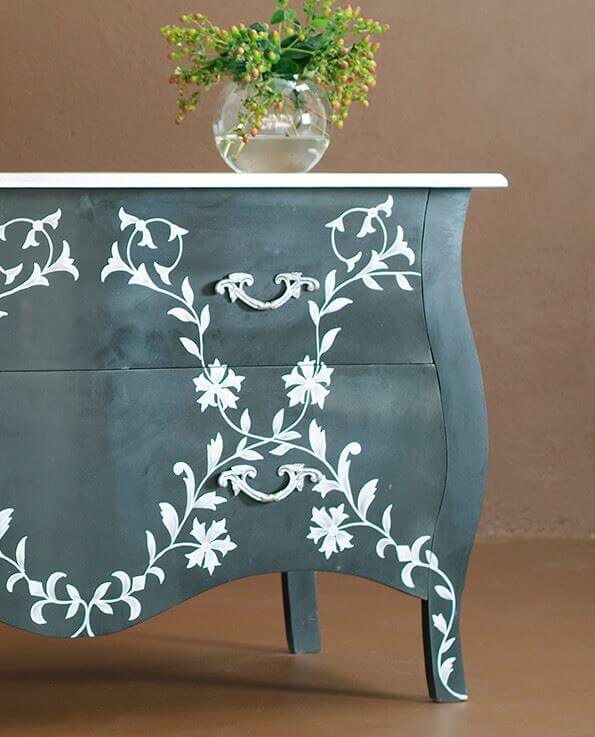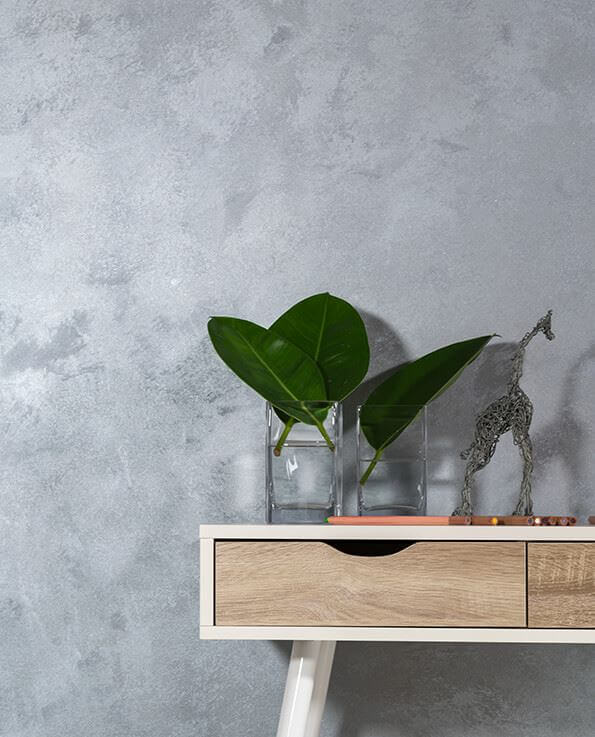
Wall paint and finishes come in various forms. The sheer number of options can make it extremely hard to choose the best one for your commercial or residential painting projects.
However, water-based paints have become quite popular in recent years, so choosing them should be an easy decision to make.
Seasoned painting contractors say the widespread shift to water-based paints is primarily due to government bodies pushing for reducing the use of products with volatile organic compounds (VOCs) that are toxic to humans and the environment.
These harmful substances also add to air pollution and end up in the atmosphere.
Water-Based Paint Basics
Water-based paint has water as its liquifying agent instead of chemical solvents, which means it emits fewer VOCs. It is the safer and healthier option for both residential and commercial properties.
Additionally, this product is less flammable and not so smelly, making it a safer, better option for confined spaces.
Using this type of paint means you can have a property that won’t exceed VOC limits and cause you to get penalized. They are not considered hazardous products as well, which means you can reduce your disposal fees.
The quality of water-based paints has improved over the years significantly. These products can leave a durable, long-lasting coating on a surface, both internally and externally. Their colors tend to look more vibrant and noticeable as well.
Moreover, with proper preparation, application, and maintenance, this type of paint is equivalent to or better at preventing rust. This product also makes repainting easier since it reduces the need to sand down the old paint, which can be stubborn and hard to remove if it is oil-based.
Because of these reasons, this type of paint is suitable for nearly all types of internal and external applications.
Using Water-Based Paint for the First Time
Water-based paints are not the same as oil-based products, meaning they have to be applied differently.
If you are applying water-based paint for the first time, take note of the following key facts and tips:
1. Store water-based paint correctly.
If you have already bought the paint but won’t use it immediately, you need to store it correctly to maintain its quality.
Always store water-based paints in dry environments at 5 to 30°C to protect them from sharp and sudden drops and spikes in temperature change.
This type of paint usually maintains around 8 to 10°C as a minimum and maximum air humidity of 80% R.H. These products are easily damaged when exposed to temperatures as high as 55°C.
When the paint is stored in such an environment, it can get dry and the product may be rendered useless or of poor quality when applied.
2. Use the right brush when applying water-based paint.
The right paintbrush can make a huge difference in the proper application of water-based paint.
Paint brushes with synthetic fiber bristles usually produce a better finish than those with natural fibers.
The reason behind this is that nylon, polyester, polypropylene, and other synthetic materials are softer than natural bristles. As a result, they provide a smoother finish and inflict less damage to delicate surfaces.
Additionally, paint brushes with synthetic fibers are less porous than natural ones. As such, they are less likely to absorb water, allowing the brush to absorb more of the paint and making it easier for you to apply it.
3. Prepare the surface to be painted properly.
Water-based paint tends to peel off easily when applied on unprepared surfaces. Therefore, it is important to prepare these well before painting on them.
Remove existing paint using a plastic scraper or putty knife and sandpaper. Use a heat gun and grit blaster if needed to remove all remnants on the surface completely.
However, when preparing the surface, avoid using steel wool since this can result in rust spots.
Remove all dust, dirt, and debris from the surface. Next, dampen the prepared area with a moist sponge before painting to help the paint stick better.
4. Follow the right practices for applying paint.
To ensure you get a satisfactory paint job when using water-based paint, follow the right steps and tips.
These include:
- Use a water-based primer undercoat. Use a product with the same brand as your chosen paint to get the best results.
- When painting, work only on one area at a time and move the paintbrush in one direction instead of going back and forth. This helps you avoid disturbing recently applied wet paint.
- Rinse your paintbrush or spray it with water at intervals to keep it wet. Doing so can help make it easier for you to apply the paint.
- If you are using a spray gun, ensure it is suitable for water-based paint. Clean the container and nozzle fully before filling it with paint.
- Make sure the paint is sufficiently dry before applying more coats. Depending on the surface, this type of product can dry within 30 minutes; however, you have to wait to re-coat. It is also best to read the manufacturer’s instructions regarding re-application to get the best results.
To have an eco-friendly, appealing property, opt for water-based interior and exterior wall paint. Moreover, remember the facts and tips here to get the best results when using this product.
Visit our Products page to explore our different kinds of water-based paints.




